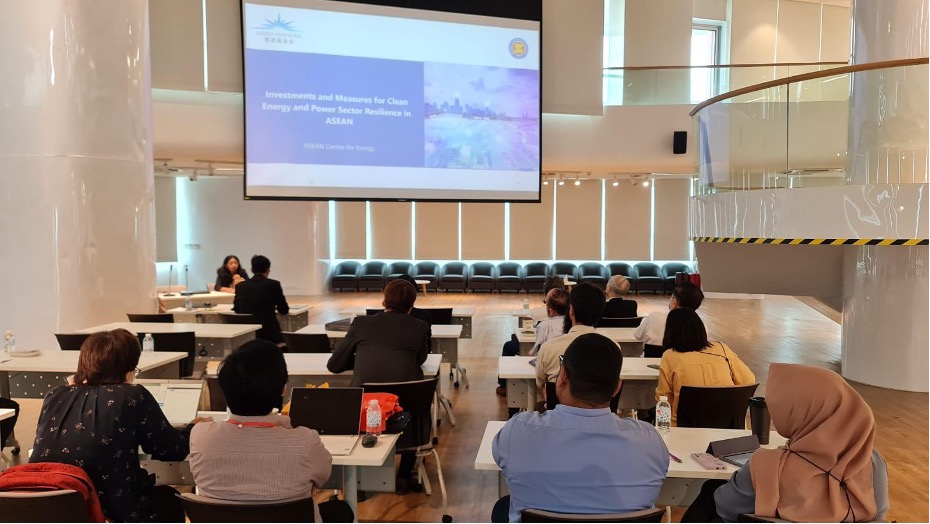Menu
The 7th ASEAN Energy Outlook (AEO7) Dissemination Roadshows were held across the ASEAN Member States (AMS), targeting the government and educational institutions.
The ASEAN Centre for Energy (ACE) continued the AEO7 Dissemination Roadshows to the King Mongkut’s University of Technology Thonburi (KMUTT) on 9th June 2023, subsequent to the success of the event in the Chulalongkorn University. The dissemination also aimed to disclose other ACE-related studies on “Investments and Measures for Clean Energy and Power Sector Resilience in ASEAN”.
Assoc. Prof. Dr Bundit Fungtammasan, Advisor to the President for Research and Innovation, KMUTT, appreciated ACE for organising this event to share knowledge about the energy system in ASEAN through ACE’s studies. Moreover, Dr Zulfikar Yurnaidi, Manager of Energy Modelling and Policy Planning (MPP) of ACE, conveyed his gratitude to the KMUTT for the warm and amicable atmosphere to welcome this event.
The main agenda started with a presentation from Dr Athikom Bangviwat, Head of Energy and Environmental Policy Laboratory (EEPL), KMUTT, reviewing Thailand’s current energy situation and policy. He also revealed the KMUTT’s support for energy transition by conducting research projects on numerous fields, including energy projection to the country.

In the next agenda, Dr Zulfikar Yurnaidi gave the audience general information about the ASEAN Energy Outlook (AEO) and its recent edition, the AEO7. He introduced the AEO modelling tool, which primarily uses Low Emissions Analysis Platform (LEAP) software to track energy consumption, production, and resource extraction across all economic sectors. Moreover, the AEO7 provided several key analyses of the ASEAN energy system, projecting the potential future in fulfilling the national and regional targets of the ASEAN Plan of Action for Energy Cooperation.
Followed by a presentation from Ms Amira Bilqis, Analyst of MPP at ACE, who explained the AEO7 modelling findings and the region’s historical and projection energy landscape. The study discovered that regional energy demand and supply are expected to increase significantly by 2050, with fossil fuels remaining the most significant source. However, based on the study, strong renewable deployment can provide up to 5.5 million new jobs by 2050. She elaborated on the intersectoral nexus between emissions and biofuel land use, whereas 8.8 million hectares of land is required to produce biodiesel.

The last session was occupied with a presentation of an ACE’s recent study on the region’s energy transition investments. Supported by the Energy Foundation China, Ms Rika Safrina, Senior Analyst of MPP of ACE, proposed an energy investment roadmap to determine the most concerning issue in their capacity-building programmes for each country. Based on AEO7, the total required investment from 2020-2050 is USD 1070 billion, but the region has limited public finance, which dominates its current financial source of clean energy investment. In her presentation, she comprehensively explained each AMS’ progress in clean energy investment.
At last, the forum encouraged the audience to open a discussion about the critical role of energy in ASEAN and low-carbon investment. Followed by a discussion, on potential improvement in the modelling approach for AEO8. Along with this, ACE expressed its longing to establish a collaboration and joint feasibility study with the KMUTT, especially for the upcoming edition of the AEO.
